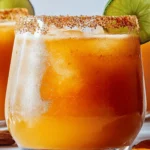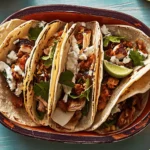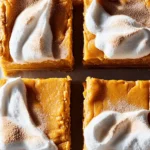La Bandera Dominicana: A Dish That Tells a Story of Culture and Tradition
La Bandera Dominicana, often simply referred to as “La Bandera,” is the quintessential dish of the Dominican Republic, a staple meal in every Dominican household. This vibrant, flavorful combination of rice, beans, and chicken has been passed down through generations and is a central part of the country’s culinary heritage. Known for its comforting and hearty nature, La Bandera is a dish that truly reflects the Dominican culture rich, full of life, and deeply connected to its history.
A Cultural Symbol
The name “La Bandera” translates to “The Flag” in English, and it is said to represent the Dominican flag itself. The dish embodies the three colors of the flag: the white rice symbolizes purity, the red beans stand for the blood of those who fought for the nation’s independence, and the chicken represents the country’s agricultural heritage. It is no surprise that this dish is so iconic it reflects not only the daily culinary traditions but also the values and pride of the Dominican people.
La Bandera is a meal that’s as much about culture and history as it is about flavor. It is deeply ingrained in Dominican daily life and is typically enjoyed for lunch, which is the main meal of the day in the Dominican Republic. The combination of rice, beans, and protein is a representation of the country’s resourcefulness, using affordable and simple ingredients to create a filling and satisfying meal.
The Heart of Dominican Cuisine
Dominican cuisine is influenced by a variety of cultures, from the indigenous Taínos, to African, Spanish, and even French influences, making it a rich, diverse fusion of flavors. La Bandera Dominicana, however, remains the heart of Dominican cooking, representing the country’s African, Spanish, and indigenous roots. This dish features rice, beans, and meat as a base, which is a shared trait across many Latin American and Caribbean cuisines, but the Dominican twist lies in the use of seasonings and preparation methods that make the dish uniquely their own.
For many, the preparation of La Bandera is more than just cooking it’s an opportunity to connect with family and traditions. It’s often cooked in large batches to feed family members, and every family has its own version of the dish, whether it be a particular blend of seasonings, the addition of fried plantains, or the inclusion of a tangy, citrusy salad on the side.
A Flavorful Meal of Simplicity
What makes La Bandera so extraordinary is its simplicity. The flavors are bold, but not overwhelming. The chicken, which is usually stewed or fried, is succulent and rich, often marinated in a blend of garlic, lime, and seasonings. The rice, fluffy and aromatic, is cooked to perfection, often flavored with a sofrito a blend of sautéed onions, garlic, bell peppers, and tomatoes which is a common base in Dominican cooking. The red beans, which are simmered until tender, add a savory and slightly sweet note that complements the rice and chicken.
Though it may seem simple, there is an art to cooking La Bandera. The chicken must be tender and juicy, the rice light and perfectly cooked, and the beans flavorful without being mushy. The balance of ingredients is key to making the dish taste as perfect as it does.
La Bandera and Its Connection to Dominican Traditions
La Bandera Dominicana is more than just a meal; it is a reflection of the values and lifestyle of the Dominican Republic. The Dominican people are known for their warmth, hospitality, and sense of family, and the preparation of La Bandera exemplifies these qualities. It’s a dish that brings people together, from family dinners to communal gatherings, where everyone shares the meal and the joy that comes with it.
This dish is also a symbol of resilience. Dominican history is full of challenges, from colonialism to political strife, and the people have always relied on their ingenuity and resourcefulness to thrive. La Bandera reflects this resilience the ability to take simple, humble ingredients and turn them into a flavorful, filling, and comforting meal.
For many Dominicans living abroad, La Bandera serves as a reminder of home. It brings nostalgia and a sense of connection to their roots. It’s not just about the taste; it’s about the memories tied to the dish, the times spent with family, and the traditions passed down from one generation to the next. It’s a way to stay connected to their culture, even from miles away.
Variations and Modern Twists on La Bandera
While the traditional version of La Bandera remains a beloved classic, modern versions and variations of the dish have also emerged. Some people may serve it with a side of fried plantains, adding a crispy texture and a slight sweetness to complement the savory chicken and beans. Others may substitute the chicken for pork, beef, or even fish, offering a new twist on the classic recipe. In more recent times, some cooks are opting for healthier alternatives, such as using brown rice instead of white or adding more vegetables to the dish for a fresher flavor profile.
Despite these variations, La Bandera always stays true to its roots. Whether you stick to the traditional recipe or experiment with different ingredients, the essence of the dish remains the same. It’s a meal that speaks to the soul, offering warmth, comfort, and connection to the Dominican way of life.
The Importance of La Bandera in Celebrating Latin-Hispanic Heritage Month
La Bandera Dominicana is the perfect dish to highlight during Latin-Hispanic Heritage Month, a time to celebrate and recognize the culture, history, and contributions of Latin American and Hispanic communities. The Dominican Republic is an important part of this rich cultural tapestry, and La Bandera is the heart of Dominican cuisine.
By enjoying this dish, you not only get to experience the flavors of the Dominican Republic but also learn about the country’s history, its people, and the cultural significance of food in their daily lives. La Bandera is more than just a meal — it’s a celebration of identity, heritage, and family, and it’s a beautiful way to share and honor Dominican culture during Latin-Hispanic Heritage Month.
Conclusion:
La Bandera Dominicana is a dish that transcends borders and connects people to their roots. Whether you’re from the Dominican Republic or simply an admirer of Latin cuisine, this dish is a celebration of the flavors, traditions, and history of the Dominican people. It’s a dish that tells a story of resilience, cultural pride, and family, and it’s the perfect way to bring a piece of the Dominican Republic to your kitchen.
As you enjoy a plate of La Bandera, remember that you’re not just eating a meal you’re participating in a tradition that has been passed down for generations. You’re savoring the love and passion that has gone into perfecting the dish, and you’re honoring the culture that continues to thrive through food. Whether you’re cooking it for the first time or sharing it with loved ones, La Bandera Dominicana will always be a symbol of comfort, community, and connection.






